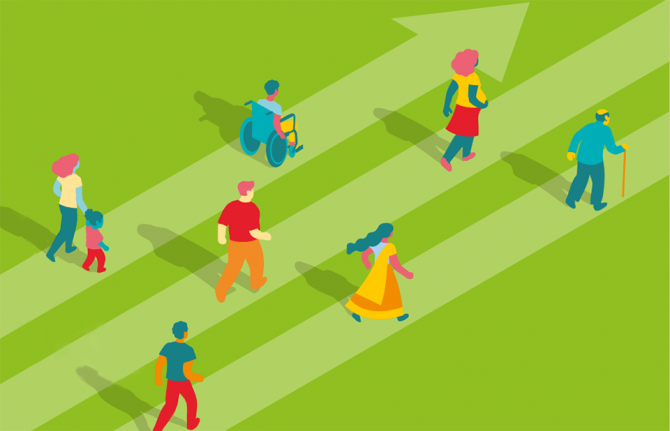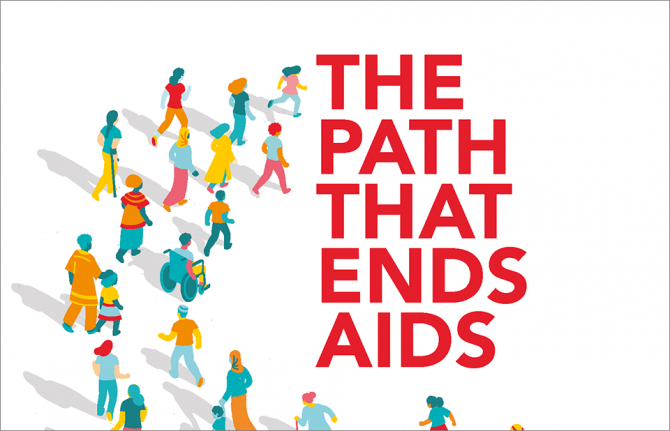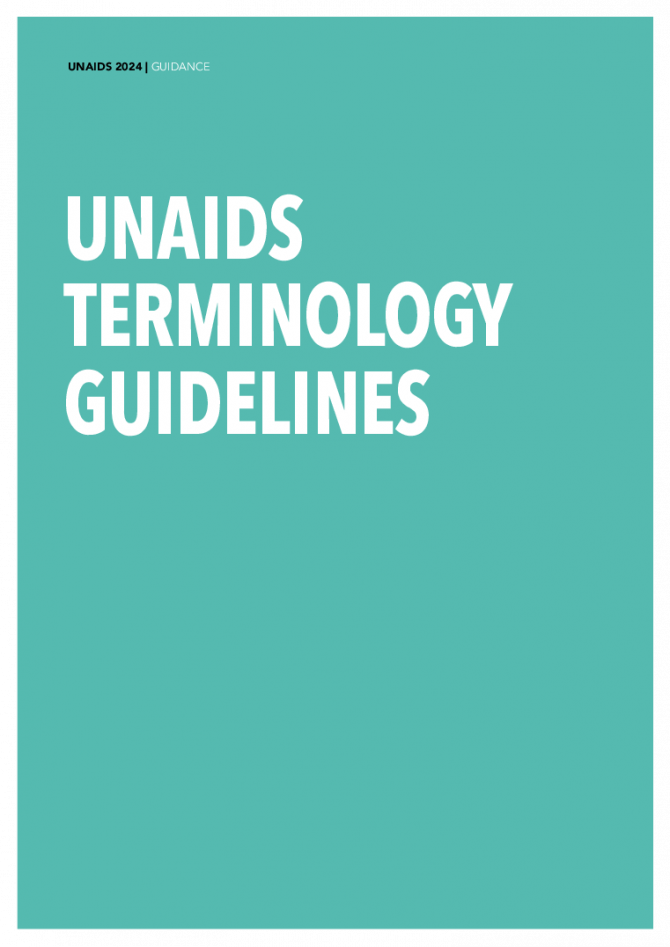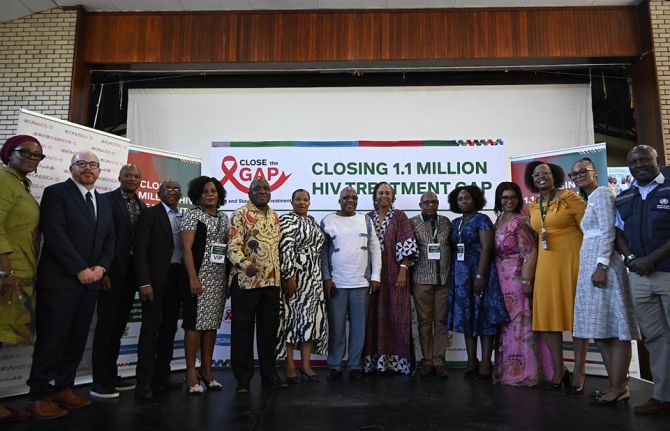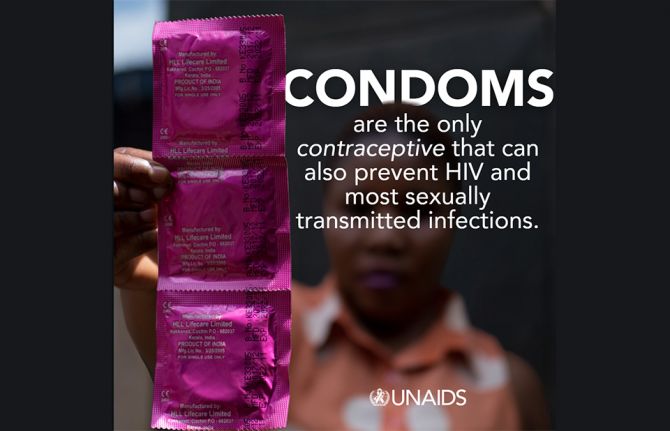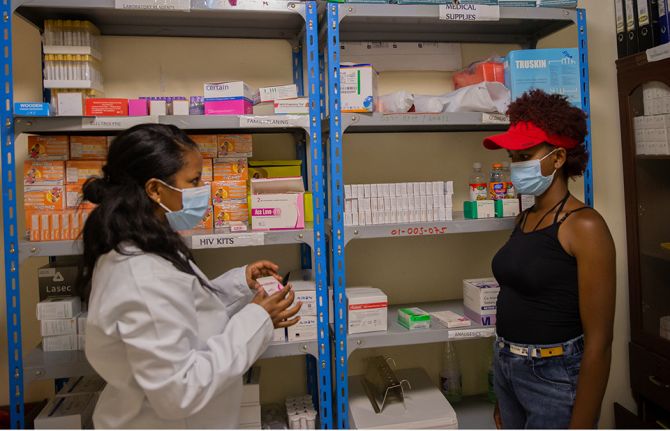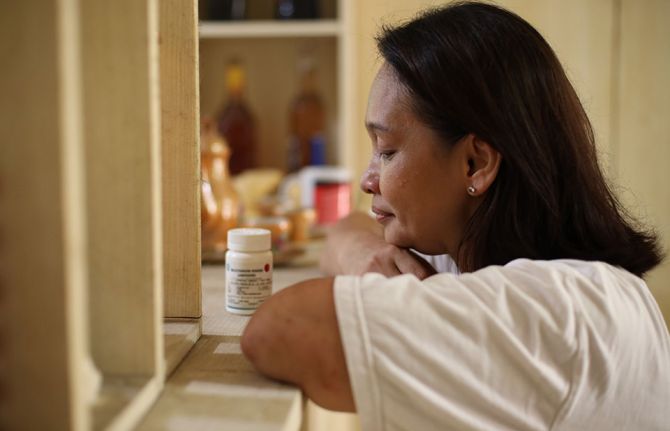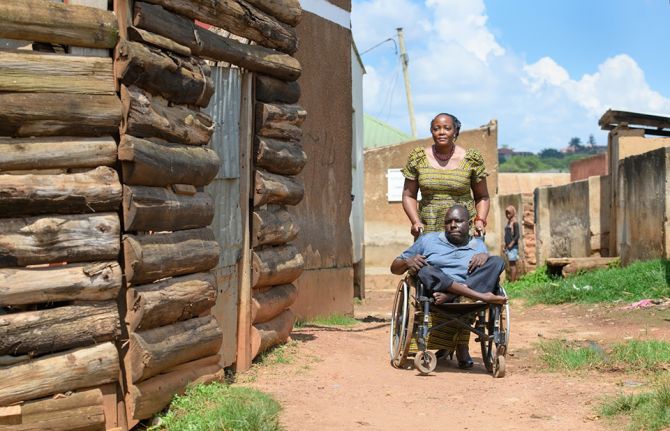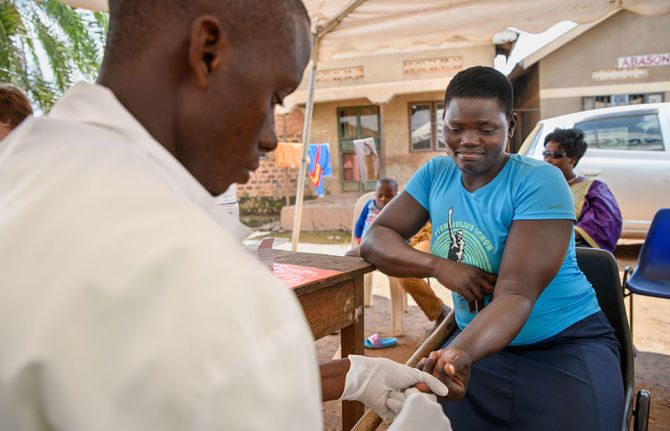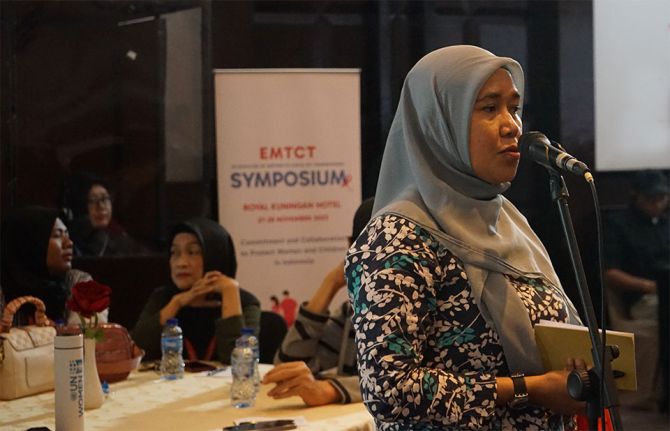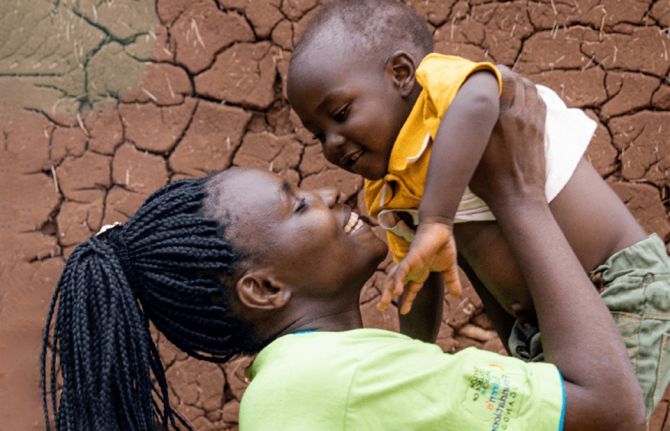Guideline
Documents
The Privacy, Confidentiality and Security Assessment Tool — User manual
14 February 2019
Based on privacy, confidentiality and security principles an Assessment Tool was developed to assess in country the extent that the confidentiality and security of personal health information is protected at facility and data warehouse/repository levels and whether national guidelines exist including privacy laws. A Manual on the use of the Assessment Tool has been produced and is available below.
Download the User’s Manual for the paper-based version
Download the electronic Privacy, Confidentiality and Security Assessment Manual and Tool
Download the paper-based Privacy, Confidentiality and Security Assessment Tool
Related
Indicators and questions for monitoring progress on the 2021 Political Declaration on HIV and AIDS — Global AIDS Monitoring 2025
17 December 2024
Frequently Asked Questions — Global AIDS Monitoring 2025
17 December 2024
Joint Evaluation of the Global Action Plan for Healthy Lives and Well-being for All (SDG 3 GAP)
16 December 2024
UNAIDS data 2024
02 December 2024
Take the rights path to end AIDS — World AIDS Day report 2024
26 November 2024
Documents
The Privacy, Confidentiality and Security Assessment Tool: Protecting personal health information
14 February 2019
With scaling-up of HIV and other health services in low- and middle-income countries, an increasing amount of personally identifiable health information is being collected at health facilities and stored in data repositories at local, regional and national levels. Countries need to protect the confidentiality and security of identifiable and de-identified personal health information, and this can be accomplished in part through the existence and implementation of relevant privacy laws, policies and programmes.
Based on these requirements a paper-based and electronic Assessment Tool have been developed to assess the existence and implementation of national country laws, policies and programmes on protecting the confidentiality and security of personal health information collected and held at the facility, data warehouse and national policy levels. The UNAIDS/PEPFAR Privacy, Confidentiality and Security Assessment Tool provides guidance for countries to facilitate, where required, the assessment of the security of the collection, storage and use of data in order to maintain privacy, confidentiality and security.
Provided below are instructions on how to download and set up the paper-based and electronic Privacy, Confidentiality and Security Assessment tool.
Download the paper-based Privacy, Confidentiality and Security Assessment Tool
Download the electronic Privacy, Confidentiality and Security Assessment Manual and Tool
Download the User’s Manual for the paper-based version
Related
Indicators and questions for monitoring progress on the 2021 Political Declaration on HIV and AIDS — Global AIDS Monitoring 2025
17 December 2024
Frequently Asked Questions — Global AIDS Monitoring 2025
17 December 2024
Joint Evaluation of the Global Action Plan for Healthy Lives and Well-being for All (SDG 3 GAP)
16 December 2024
UNAIDS Terminology Guidelines
01 July 2024
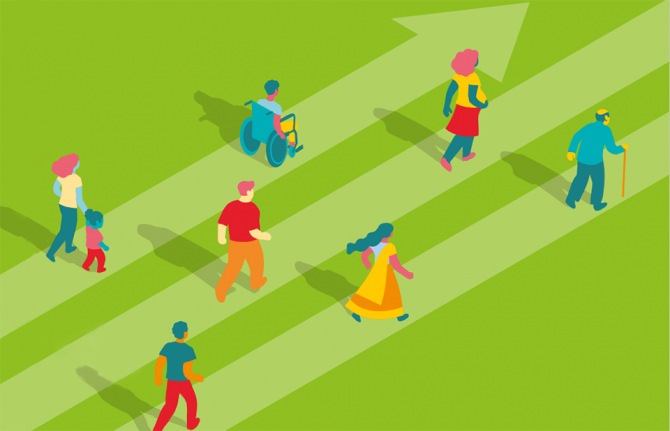 Member States negotiating the pandemic instrument have an opportunity to save lives and keep the world safe, says UNAIDS
Member States negotiating the pandemic instrument have an opportunity to save lives and keep the world safe, says UNAIDS

18 February 2024
HIV response sustainability primer
17 January 2024

Press Statement
UNAIDS welcomes release of new guidelines from the World Health Organization on the use of antiretroviral medicines
30 November 2015 30 November 2015New guidelines are a major step towards achieving UNAIDS Fast-Track Targets
GENEVA, 30 November 2015—UNAIDS has welcomed the release by the World Health Organization (WHO) of new guidelines on the use of antiretroviral medicines as a significant step towards improving the lives of people living with HIV and reducing the transmission of the virus.
The guidelines recommend that antiretroviral medicines be prescribed to people as soon as possible after their HIV diagnosis regardless of their CD4 count (CD4 is a measure of immune system health).The guidelines also recommend that people at higher risk of HIV infection be given access to pre-exposure prophylaxis (PrEP) as part of a combined HIV prevention strategy.
“These new guidelines and recommendations are a highly significant moment in the AIDS response,” said Michel Sidibé, Executive Director of UNAIDS. “The medicines and scientific tools now at our disposal provide us with a real opportunity to save millions of lives over the coming years and to end the AIDS epidemic by 2030.”
The WHO guidelines, produced with the support of UNAIDS, are being released following the increased weight of research evidence that has emerged over the past 12 months. This included data from the international randomized clinical trials Temprano and START (Strategic Timing of Antiretroviral Treatment), which found compelling evidence of the benefits of immediately starting antiretroviral therapy. The data from Temprano and START followed a series of research findings over several years demonstrating the health benefits of starting HIV treatment earlier.
Several research studies among groups at higher risk of HIV infection have also indicated the significant efficacy of PrEP in reducing new HIV infections. The new guidelines recommend that PrEP be offered to anybody at substantial risk of HIV exposure.
The guidelines will also help reinforce the UNAIDS Fast-Track approach, which encompasses a set of targets to be reached by 2020. The targets include 90% of all people living with HIV knowing their HIV status, 90% of people who know their HIV-positive status having access to treatment and 90% of people on treatment having suppressed viral loads. They also include reducing new HIV infections by 75% and achieving zero discrimination.
“We are at a crossroads in the response to AIDS,” said Mr Sidibé. “We know what works – now we need to put people first and fully respect their right to health.”
UNAIDS reaffirms the importance of respecting a person’s right to know their HIV status and to decide whether and when to begin antiretroviral therapy. HIV prevention and treatment decisions must be well-informed and voluntary. Wider and more equitable delivery of antiretroviral therapy and PrEP will require increased efforts to address the social and legal barriers that inhibit access to health services for people living with HIV and for key populations at higher risk of infection.
UNAIDS
The Joint United Nations Programme on HIV/AIDS (UNAIDS) leads and inspires the world to achieve its shared vision of zero new HIV infections, zero discrimination and zero AIDS-related deaths. UNAIDS unites the efforts of 11 UN organizations—UNHCR, UNICEF, WFP, UNDP, UNFPA, UNODC, UN Women, ILO, UNESCO, WHO and the World Bank—and works closely with global and national partners towards ending the AIDS epidemic by 2030 as part of the Sustainable Development Goals. Learn more at unaids.org and connect with us on Facebook, Twitter, Instagram and YouTube.
Press centre
Download the printable version (PDF)
Documents
UNAIDS Terminology Guidelines
01 July 2024
Language influences the way we think, how we perceive reality, and how we behave. With respect to HIV, language can embody stigma and discrimination, which impacts access to testing, acquisition of HIV, and engagement with treatment. Language plays a role in supporting respect and empowerment of individuals, as communities shape how they are referred to and the labels they wish to use. Consideration and use of appropriate language can strengthen the global response to the HIV pandemic by diminishing stigma and discrimination and increasing support and understanding for individuals and communities living with HIV. Comments and suggestions for modifications should be sent to editorialboard@unaids.org
Related
 UNAIDS calls for rights, equality and empowerment for all women and girls on International Women’s Day
UNAIDS calls for rights, equality and empowerment for all women and girls on International Women’s Day

06 March 2025
 U=U can help end HIV stigma and discrimination. Here’s how
U=U can help end HIV stigma and discrimination. Here’s how

27 February 2025
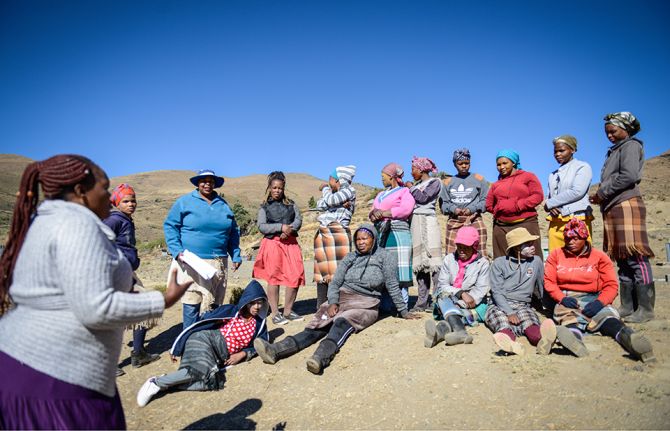 How the shift in US funding is threatening both the lives of people affected by HIV and the community groups supporting them
How the shift in US funding is threatening both the lives of people affected by HIV and the community groups supporting them

18 February 2025
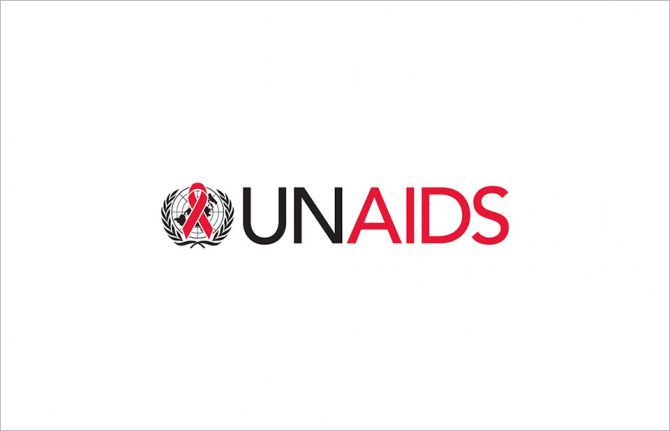 UNAIDS urges that all essential HIV services must continue while U.S. pauses its funding for foreign aid
UNAIDS urges that all essential HIV services must continue while U.S. pauses its funding for foreign aid

01 February 2025

Feature Story
Report calls for urgent scale-up of MSM strategies to prevent HIV in Asia Pacific
28 May 2010
28 May 2010 28 May 2010
A report on HIV among men who have sex with men and transgender people in the Asia-Pacific region has called for urgent scale-up of strategies to prevent the transmission of HIV, and to ensure greater access to treatment, care and support for those already in need.
Titled “Priority HIV and sexual health interventions in the health sector for men who have sex with men and transgender people in the Asia-Pacific Region”, the report was developed after a meeting held in Hong Kong in February 2009, organized by WHO Regional Office for the Western Pacific, UNDP, UNAIDS and the Department of Health of Hong Kong.
The context of the report is important as it comes at the back of two similar reports—by the Commission on AIDS in Asia and by the Commission on AIDS in the Pacific—recommending that the control of the HIV epidemic in the region would imply focusing on the most-at-risk populations, including men who have sex with men (MSM) and transgender persons (TG).
The HIV epidemic among MSM and TG is escalating globally and in Asia, MSM are disproportionately affected by it, with the odds of MSM having HIV infection being 18.7 times higher than that in the general population, the report states. The Asian Epidemic Model projects that unless effective prevention measures are intensified, by 2020, around 46% of new infections in Asia will be among MSM, up from 13% in 2008.
The report lays great emphasis on repealing laws by parliament or decisions by courts that violate the constitutional rights of MSM. Male-to-male sexual behaviour remains a criminal offence in 18 Asia-Pacific countries, contributing directly to the stigma associated with male-to-male sex and driving MSM underground, making it more difficult for prevention programmes to reach them.
To counter difficulties in motivating health workers and reducing stigma and discrimination, the report recommends sensitizing health workers to work with people living with HIV, including MSM and TG; and recruiting MSM and TG into healthcare positions.
The report recommends for the involvement of MSM in community responses to HIV through self-organization. MSM should be given supportive access to the full range of services in which staff are sensitized to their issues and needs. Peer support and counselling should be actively encouraged, it states.
National health sector strategies and plans should call for the engagement of civil society and MSM and TG community based organisations in strategic planning, programme development, implementation, monitoring and evaluation.
Finally, the report recommends involving WHO, United Nations Development Programme (UNDP), UNAIDS, United Nations Educational, Scientific and Cultural Organization (UNESCO) and the Asia Pacific Coalition on Male Sexual Health (APCOM) in all aspects of planning, implementing, monitoring and evaluating health sector responses to HIV at the global, regional, national and local levels.
Report calls for urgent scale-up of MSM strategie
Key populations:
Cosponsors:
World Health Organization
United Nations Development Programme
Feature stories:
Punitive laws limit access to HIV prevention and care services in Asia Pacific (21 May 2010)
HIV prevention hampered by homophobia
(13 January 2009)
External links:
Department of Health of Hong Kong
Commission on AIDS in the Pacific
Publications:
Priority HIV and sexual health interventions in the health sector for men who have sex with men and transgender people in the
Asia-Pacific Region (pdf, 1.84 Mb.)
Turning the tide: An open strategy for a response to AIDS in the Pacific. Report of the Commission on AIDS in the Pacific (pdf,
1.52 Mb.)
HIV and Men who have Sex with Men in Asia and the Pacific (pdf, 1.11 Mb.)
Related
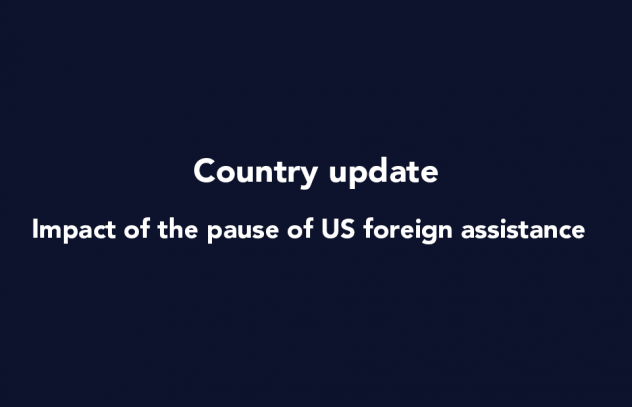 Status of HIV Programmes in Indonesia
Status of HIV Programmes in Indonesia

24 February 2025

Feature Story
Sexuality education an imperative for children and young people in a world affected by AIDS
10 December 2009
10 December 2009 10 December 2009
(From L to R) Mark Richmond, UNESCO’s Global Coordinator on HIV and AIDS, Dr Mariangela Batista Galvao Simao, Director, Brazil National STD/AIDS Programme, Michel Sidibé, UNAIDS Executive Director, Elizabeth Mataka, member of the Global Advisory Group on Sexuality Education and the UN Secretary-General’s Special Envoy for AIDS in Africa and Marijke Wijnroks, the AIDS ambassador for the Netherlands
Credit: UNAIDS/D.Bregnard
In many parts of the world, a combination of social taboos, unavailability of sound information, lack of resources and infrastructure make it difficult for children and young people to access sexuality education aimed at improving knowledge and reducing risk. This leaves many young people vulnerable to coercion, abuse, exploitation, unintended pregnancy and sexually transmitted infections, including HIV.
According to the UNAIDS 2008 Global Report on the AIDS Epidemic, only 40% of young people aged 15-24 had accurate knowledge about HIV and transmission. It should come as no surprise that, against this background of insufficient levels of basic knowledge, young people aged 15-24 account for 40% of all new HIV infections (UNAIDS 2009 AIDS Epidemic Update).
In response to this challenge, the voluntary and non-mandatory International Technical Guidance on Sexuality Education developed by UNESCO in partnership with UNAIDS, UNFPA, UNICEF and WHO seeks to assist education, health and other relevant authorities to develop and implement school-based sexuality education materials and programmes. The International Technical Guidance on Sexuality Education is based on a rigorous review of evidence on sexuality education programmes and is aimed at education and health sector decision-makers and professionals.
If we are to make an impact on children and young people before they become sexually active, comprehensive sexuality education must become part of the formal school curriculum, delivered by well trained and supported teachers.
Michel Sidibé, UNIADS Executive Director
Sexuality education can play a key role in improving knowledge and reducing sexual risk behaviours among young people. Equipped with better knowledge, information and skills, young people can be empowered to make informed decisions about sexual choices.
“If we are to make an impact on children and young people before they become sexually active, comprehensive sexuality education must become part of the formal school curriculum, delivered by well trained and supported teachers,” says Michel Sidibé, UNAIDS Executive Director. “Teachers remain trusted sources of knowledge and skills in all education systems and they are a highly valued resource in the education sector response to AIDS.”
The International Technical Guidance on Sexuality Education was co-authored by leading experts in the field of sexuality education and subjected to extensive review and comment by a global panel of experts and practitioners from civil society organizations, ministries of education and international agencies. Volume I of the International Technical Guidance on Sexuality Education focuses on the rationale for sexuality education and provides sound technical advice on characteristics of effective programmes. It is the outcome of a rigorous review of the literature on the impact of sexuality education and sexual behaviour, drawing upon 87 studies from around the world.
Numerous studies show that with the right information and skills, young people can change their behaviour to reduce the risk of acquiring HIV infection or passing it on to others.
Mark Richmond, UNESCO’s Global Coordinator on HIV and AIDS
A companion document (Volume II) focuses on the topics and learning objectives to be covered in a ‘basic minimum package’ on sexuality education for children and young people from 5 to 18+ years of age and includes a bibliography of useful resources. It was informed by a review of curricula from 12 countries, as well as other international models.
“Numerous studies show that with the right information and skills, young people can change their behaviour to reduce the risk of acquiring HIV infection or passing it on to others,” says Mark Richmond, UNESCO’s Global Coordinator on HIV and AIDS and the Director for the Division for the Coordination of UN Priorities in Education. “At a minimum, HIV and AIDS education needs to include information on the HIV virus and its modes of transmission. At some point, HIV and AIDS education must introduce sex and relationships education - simply because over 75% of all HIV infections occur through sexual transmission.”
The UN organizations called on policy-makers to listen to young people, families, teachers and other practitioners, and use the International Technical Guidance to make sexuality education an integral part of the national response to the HIV pandemic.
UNESCO and its partners including UNAIDS, UNFPA, UNICEF and WHO, as well as a wide range of other partners, will support governments in operationalising the International Technical Guidance on Sexuality Education at regional and country level. The two volumes of the International Technical Guidance will be published in all the six UN languages (Arabic, Chinese, English, French, Russian and Spanish) as well as Portuguese.
Sexuality education an imperative for children an
Key populations:
Cosponsors:
Feature stories:
Michel Sidibé calls for prevention revolution in opening address at UNAIDS’ governing body meeting (08 December 2009)
Preventing HIV through education in Latin America and Caribbean (31 July 2009)
New publication champions a strategic approach to HIV and education (15 June 2009)
Publications:
International Technical Guidance on Sexuality Education (Volume-I) (pdf, 2.84 Mb.)
International Technical Guidance on Sexuality Education (Volume-II) (pdf, 1.94 Mb.)
Related

Feature Story
New HIV recommendations to improve health, reduce infections and save lives
30 November 2009
30 November 2009 30 November 2009
Credit: UNAIDS
On the eve of World AIDS Day, the World Health Organization (WHO) is releasing new recommendations on treatment, prevention and infant feeding in the context of HIV, based on the latest scientific evidence.
WHO now recommends earlier initiation of antiretroviral therapy (ART) for adults and adolescents, the delivery of more patient-friendly antiretroviral drugs (ARVs), and prolonged use of ARVs to reduce the risk of mother-to-child transmission of HIV. For the first time, WHO recommends that HIV-positive mothers or their infants take ARVs while breastfeeding to prevent HIV transmission.
"These new recommendations are based on the most up to date, available data," said Dr Hiroki Nakatani, Assistant Director General for HIV/AIDS, TB, Malaria and Neglected Tropical Diseases at the World Health Organization. "Their widespread adoption will enable many more people in high-burden areas to live longer and healthier lives."
An estimated 33.4 million people are living with HIV, and there are some 2.7 million new infections each year. Globally, AIDS is the leading cause of mortality among women of reproductive age.
New treatment recommendations
In 2006, WHO recommended that all patients start ART when their CD4 count (a measure of immune system strength) falls to 200 cells/mm3 or lower, at which point they typically show symptoms of HIV disease. Since then, studies and trials have clearly demonstrated that starting ART earlier reduces rates of death and disease. WHO is now recommending that ART be initiated at a higher CD4 threshold of 350 cells/mm3 for all HIV-positive patients, including pregnant women, regardless of symptoms.
WHO also recommends that countries phase out the use of Stavudine, or d4T, because of its long-term, irreversible side-effects. Stavudine is still widely used in first-line therapy in developing countries due to its low cost and widespread availability. Zidovudine (AZT) or Tenofovir (TDF) are recommended as less toxic and equally effective alternatives.
The 2009 recommendations outline an expanded role for laboratory monitoring to improve the quality of HIV treatment and care. They recommend greater access to CD4 testing and the use of viral load monitoring when necessary. However, access to ART must not be denied if these monitoring tests are not available.
Preventing mother-to-child transmission and improving child survival
In 2006, WHO recommended that ARVs be provided to HIV-positive pregnant women in the third trimester (beginning at 28 weeks) to prevent mother-to-child transmission of HIV. At the time, there was insufficient evidence on the protective effect of ARVs during breastfeeding. Since then, several clinical trials have shown the efficacy of ARVs in preventing transmission to the infant while breastfeeding. The 2009 recommendations promote the use of ARVs earlier in pregnancy, starting at 14 weeks and continuing through the end of the breastfeeding period.
WHO now recommends that breastfeeding continue until the infant is 12 months of age, provided the HIV-positive mother or baby is taking ARVs during that period. This will reduce the risk of HIV transmission and improve the infant's chance of survival.
"In the new recommendations, we are sending a clear message that breastfeeding is a good option for every baby, even those with HIV-positive mothers, when they have access to ARVs," said Daisy Mafubelu, WHO's Assistant Director General for Family and Community Health.
National health authorities are encouraged by WHO to identify the most appropriate infant feeding practice (either breastfeeding with ARVs or the use of infant formula) for their communities. The selected practice should then be promoted as the single standard of care.
Benefits and challenges
An earlier start to antiretroviral treatment boosts the immune system and reduces the risks of HIV-related death and disease. It also lowers the risk of HIV and TB transmission.
The new prevention of mother to child transmission (PMTCT) recommendations have the potential to reduce mother-to-child HIV transmission risk to 5% or lower. Combined with improved infant feeding practices, the recommendations can help to improve child survival.
The main challenge lies in increasing the availability of treatment in resource-limited countries. The expansion of ART and PMTCT services is currently hindered by weak infrastructure, limited human and financial resources, and poor integration of HIV-specific interventions within broader maternal and child health services.
The recommendations, if adopted, will result in a greater number of people needing treatment. The associated costs of earlier treatment may be offset by decreased hospital costs, increased productivity due to fewer sick days, fewer children orphaned by AIDS and a drop in HIV infections.
Another challenge lies in encouraging more people to receive voluntary HIV testing and counselling before they have symptoms. Currently, many HIV-positive people are waiting too long to seek treatment, usually when their CD4 count falls below 200 cells/mm3. However, the benefits of earlier treatment may also encourage more people to undergo HIV testing and counselling and learn their HIV status.
WHO, in collaboration with key partners, will provide technical support to countries to adapt, adopt and implement the revised guidelines. Implemented at a wide scale, WHO's new recommendations will improve the health of people living with HIV, reduce the number of new HIV infections and save lives.
New HIV recommendations to improve health, reduce
Cosponsors:
Publications:
Rapid advice: revised WHO principles and recommendations on infant feeding in the context of HIV(November 2009)
Rapid advice: antiretroviral therapy for HIV infection in adults and adolescents(November 2009)
Rapid advice: use of antiretroviral drugs for treating pregnant women and preventing HIV Infection in infants(November 2009)
Related

Feature Story
New report calls for policy changes on HIV and disability
11 November 2009
11 November 2009 11 November 2009Participants at the International Policy Dialogue, held in Ottawa, Canada, March 2009
Credit: Health Canada
A new report by Health Canada’s International Affairs Directorate has called for a greater focus on rights of people with disabilities in HIV policy. The report makes recommendations for policy change and follows an International Policy Dialogue held between UNAIDS, Health Canada and the Public Health Agency of Canada in Ottawa in March 2009.
Titled “HIV/AIDS and Disability: Final Report of the 4th International Policy Dialogue”, it calls for the United Nations' Convention on the Rights of Persons with Disabilities (CRPD) to become a catalyst for change by shifting the disability discourse from charity-based or medical-based approaches to a rights-based approach. This approach views people with disabilities as active participants in society, ensuring their wellbeing rather than treating them as passive recipients of charitable goodwill.
The report recommends the involvement of stakeholders in helping CRPD become a tool for change. These stakeholders include WHO, UNICEF, UNAIDS, national governments and ministries and civil society organizations working in the areas of disability and HIV.
There is a double stigma experienced by people living with both HIV and disability. Much effort is required to overcome this, beginning with raising awareness and open communication. For example, in South Africa youth with disabilities are trained to provide HIV prevention and treatment information to their peers; in Kenya HIV screening information is provided to the deaf by the deaf; and Uganda has established mental health clinics for people living with HIV. The report suggests taking a lead from these programmes.
The International Policy Dialogue meeting was organized by UNAIDS, Health Canada and the Public Health Agency of Canada
Credit: Health Canada
It calls for service providers in the AIDS response to be sensitised on how to interact with people with disabilities and to establish mobile voluntary counselling and treatment services to increase access to people living with disabilities who are unable to reach them on their own.
The HIV and Disability report recognises the need for more education and awareness for children, youth and adults living with developmental disabilities, and also suggests working on providing information on sexual and mental to people with disabilities.
The report discusses challenges related to sustaining pilot projects, securing funds, sharing the results and benefits of HIV, AIDS and disability projects, and educating donor countries, governments and NGOs in the value of investing in this area.
UNAIDS, along with WHO and the United Nations Office of the High Commissioner for Human Rights, has collaborated on a policy brief exploring the links between HIV and disability and that also makes recommendations for policy change.
Apart from discussing the actions needed to increase the participation of persons with disabilities in the HIV response and to ensure they have access to HIV services, it also recommends for governments to incorporate persons with disabilities into their national HIV policies.
It also urges civil society to ensure campaigns to combat stigma and discrimination of people living with HIV are also accessible to persons with disabilities and advocates for the latter to be included in planning, implementation and evaluation of HIV programmes.
People with disability
Around 650 million people, or 10% of the world’s population, have a disability. Although people with disabilities are found within the populations at higher risk of exposure to HIV, not much attention has been paid in the past to the relationship between HIV and disability.
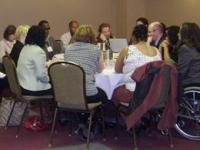
Participants in breakout groups at the International Policy Dialogue, held in Ottawa, Canada, March 2009
Credit: Health Canada
People with disabilities and people living with HIV shared their personal experiences during the International Policy Dialogue in March to give voice to both the challenges they face and the abilities they hold.
Persons with disabilities experience all of the risk factors associated with HIV, and are often at increased risk because of poverty, severely limited access to education and health care, lack of information and resources, lack of legal protection, increased risk of violence and rape, vulnerability to substance abuse, and stigma.
New report calls for policy changes on HIV and di
Cosponsors:
Partners:
UN Office of the High Commissioner for Human Rights
Health Canada
Public Health Agency of Canada
Feature stories:
Disability and HIV in Jamaica (08 September 2008)
External links:
Journal of the International AIDS Society - Thematic page on HIV and Disability
Publications:
Policy brief: Disability and HIV (pdf, 207 Kb)
HIV/AIDS and Disability: Final Report of the 4th International Policy Dialogue
Related

Feature Story
The route to good living: World Bank guide to HIV prevention in Africa’s transport sector
14 July 2009
14 July 2009 14 July 2009 Credit: The World Bank
Credit: The World BankTransport corridors in sub-Saharan Africa, as elsewhere, enable movement of people and goods, increasing economic activity and spreading wealth. But they also facilitate the spread of HIV. In response, the Africa Transport Sector of the World Bank has published a practical new booklet on how to implement HIV prevention activities as part of road construction projects.
The booklet, The route to good living: An overview of roles and responsibilities for HIV prevention strategies in transport sector projects, shows just why this matters. Numerous studies find relatively high HIV prevalence in this sector, especially among long-distance truck drivers. Several have shown that truckers in Kenya, Rwanda and Uganda were more than twice as likely to be living with HIV as the general population.
Many transport workers spend weeks or months away from their families, and often have multiple sexual partners, which can facilitate the spread of HIV. In Nigeria, for example, one study documented each driver having more than six sexual partners at various stops along his route. This means that people living in and around major transport hubs also have increased vulnerability. In Kenya, along the Trans-Africa Highway, high risk behaviour has been reported among boys and girls visiting truck stops and incidence of sexually transmitted infections was documented in 50 percent of the girls and 30 percent of the boys.
 Credit: The World Bank
Credit: The World BankThe route to good living highlights practical steps that can be taken to prevent new infections among transport workers and roadside communities, with special emphasis on road construction works. It summarizes ‘do and don’ts’ for transport ministries, World Bank teams, contractors, consultants, country project units, donors and NGOs when designing and implementing such projects. An overview of the roles and responsibilities of each set of actors within the project cycle is provided: from identification to preparation to implementation and, finally, completion. An HIV prevention strategy should be not an afterthought but an integral part of the undertaking.
The booklet is the latest addition to the information and tools available on the World Bank Africa Transport Sector's AIDS web site.
 Promoting HIV prevention in the transport sector is a key component of the overall AIDS response
Promoting HIV prevention in the transport sector is a key component of the overall AIDS response Credit: The World Bank
It is the result of the sub-Saharan Africa Transport Policy Programme (SSATP) encouraging discussions and collaboration among a range of partners, including the Bank, to provide concrete support in dealing with HIV. The SSATP, a unique partnership of 35 countries, eight regional economic communities, three African institutions (including the African Union/New Partnership for Africa's Development) and international partners recognizes the importance of the transport sector in achieving its goals of reducing poverty and promoting economic growth and regional integration.
In order for the transport sector to fulfill its pivotal role, the potentially devastating effects of the AIDS epidemic must be effectively challenged. The route to good living provides a concrete guide to help achieve this goal
The route to good living: World Bank guide to HIV
Cosponsors:
World Bank’s AIDS work in Africa
Feature stories:
The AIDS response: Relationship to development in Africa (22 September 2008)
World Bank lays out new AIDS strategy for 2007-2011 (14 may 2008)
Tools:
More on the Sub-Saharan Africa Transport Policy Programme (SSATP)
Publications:
The route to good living: An overview of roles and responsibilities for HIV prevention strategies in transport sector projects (pdf, 716 Kb.)
Related
 Zambia - an HIV response at a crossroads
Zambia - an HIV response at a crossroads

24 February 2025
 Status of HIV Programmes in Botswana
Status of HIV Programmes in Botswana

20 February 2025

Feature Story
Better HIV diagnosis in mothers and infants to avoid death from TB vaccine
03 July 2009
03 July 2009 03 July 2009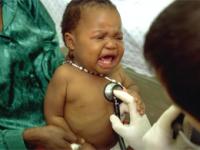
18 month old baby in Baragwanath Hospital, Soweto, South Africa
Credit: UNAIDS/L. Gubb
Bacille Calmette-Guérin, or BCG, is one of the most widely given vaccines globally and is safe in people with healthy immune systems. WHO recently published further research on the finding that this standard tuberculosis vaccine has a higher risk of causing death in babies living with HIV.
Given the severity of these risks, WHO recommends not vaccinating babies with HIV and delaying vaccination for those whose HIV status is unknown but who have signs or symptoms consistent with HIV infection.
This recommendation came in 2007 and poses several challenges to weak health systems around the world.
This paper gives better information on the risk of generalized BCG infection in HIV infected children and strongly reinforces the need to find better ways to prevent TB in infants (who are most at risk of dying from TB) and for diagnosing HIV in infants.
Dr Alasdair Reid, UNAIDS TB Adviser
It underscores the need for more widespread testing of HIV in babies and pregnant mothers. Clinical symptoms of HIV infection typically occur after 3 months of age but in some countries babies are routinely vaccinated with BCG at birth.
UNAIDS calls for scaling up access to and use of quality services for the prevention of mother-to-child transmission as well as integrated delivery of services for HIV and tuberculosis.
“A selective BCG vaccination policy in HIV-exposed infants will require high uptake of maternal HIV testing, strengthened prevention of mother-to-child transmission services, and better integration of TB and HIV programmes,” said Dr Catherine Hankins, UNAIDS Chief Scientific Adviser in HIV this Week scientific blog.
The results of a three-year study in South Africa were published in the July edition of the journal Bulletin of the WHO. They confirm earlier research which led WHO in 2007 to change BCG vaccination policy for babies. The WHO Global Advisory Committee on Vaccine Safety and the Strategic Advisory Group of Experts TB and HIV experts then published Revised BCG vaccination guidelines for infants at risk for HIV infection.
“This paper gives better information on the risk of generalized BCG infection in HIV infected children and strongly reinforces the need to find better ways to prevent TB in infants (who are most at risk of dying from TB) and for diagnosing HIV in infants,” said Dr Alasdair Reid, UNAIDS TB Adviser.
Four scenarios, outlined by WHO, that affect the balance of risks and benefits of BCG vaccination in settings with high burdens of tuberculosis and HIV infection
1. Infants born to women of unknown HIV status
The benefits of BCG vaccination outweigh the risks, and infants should be vaccinated.
2. Infants whose HIV infection status is unknown and who demonstrate no sign or symptom of HIV infection, but who are born to women known to be HIV-infected
The benefits of BCG vaccination usually outweigh the risks, and infants should receive the vaccine after consideration of local factors.
3. Infants who are known to be HIV-infected, with or without signs or symptoms of HIV infection
The risks of BCG vaccination outweigh the benefits and infants should not receive the vaccine, but they should receive other routine vaccines.
4. Infants with unknown HIV infection status but who have signs or symptoms of HIV infection and were born to HIV-infected mothers
The risks of BCG vaccination usually outweigh the benefits, and children should not be vaccinated during the first few weeks of life, since clinical symptoms of HIV infection typically occur after 3 months of age. However, the vaccine can be given if HIV infection is ruled out by early virological testing.
See Revised BCG vaccination guidelines for infants at risk for HIV infection, 2007.
Better HIV diagnosis in mothers and infants to av
Cosponsors:
Publications:
Revised BCG vaccination guidelines for infants at risk for HIV infection. Wkly Epidemiol Rec 2007; 82: 193-6 pmid: 17526121
Disseminated bacille Calmette–Guérin disease in HIV-infected South African infants. Bulletin of the World Health Organization (BLT) Volume 87, Number 7, July 2009, 485-564




